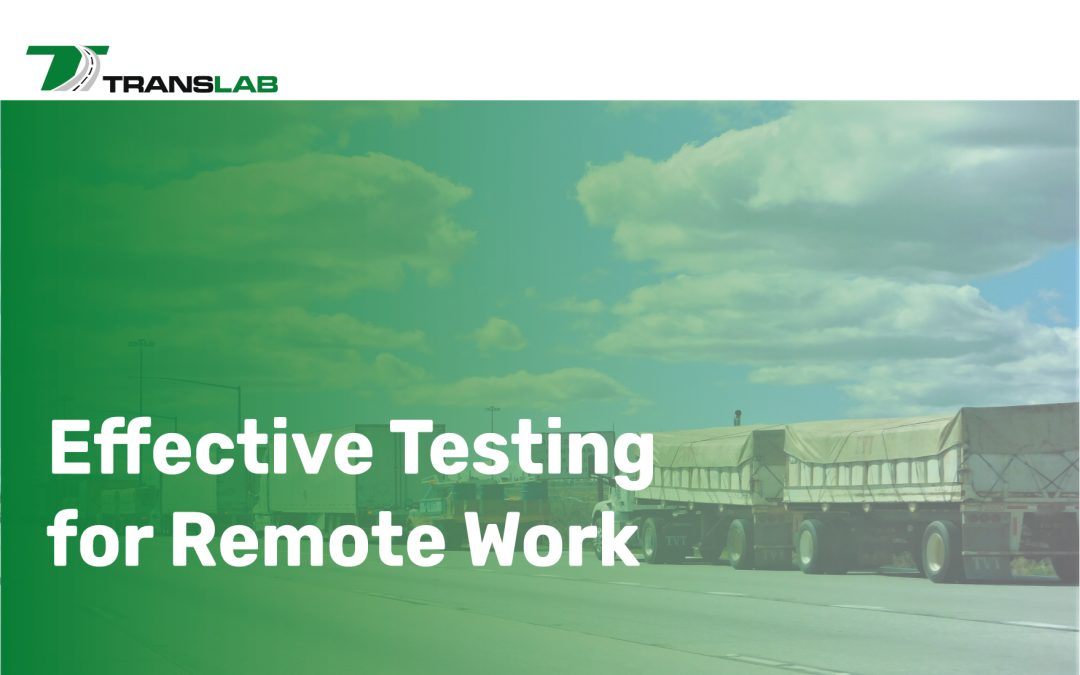As organizations increasingly embrace remote and hybrid work models, ensuring the effectiveness and reliability of testing programs has become paramount. The unique challenges posed by these work environments require tailored strategies that account for distributed teams, varied locations, and diverse technologies. This blog outlines key steps to implement effective testing programs that meet the needs of remote and hybrid work setups.
Understand the Remote Work Context
Remote and hybrid work models introduce complexities in communication and collaboration. Before implementing a testing program, it’s essential to understand the specific dynamics of your team and their working conditions. This includes identifying the tools they use, their preferred communication channels, and any potential obstacles they may face. Engaging with team members to gather insights about their experiences can help tailor the testing program to better serve their needs.
Set Clear Objectives
Establishing clear objectives for your testing program is critical. Determine what you aim to achieve with the program—whether it’s improving software quality, ensuring security compliance, or enhancing user experience. Objectives should be specific, measurable, achievable, relevant, and time-bound (SMART). Having defined goals will guide your testing strategy and help assess its success over time.
Choose the Right Tools and Technologies
The choice of tools can significantly influence the effectiveness of your testing program. For remote and hybrid teams, selecting cloud-based tools can enhance collaboration and accessibility. Look for platforms that support automation, real-time feedback, and integration with existing workflows. Ensure the chosen tools align with your team’s technical capabilities and can accommodate the unique challenges posed by remote work.
Foster a Collaborative Culture
Encouraging a collaborative culture is essential for effective testing programs in remote and hybrid environments. Create opportunities for team members to communicate regularly, share insights, and collaborate on testing efforts. Virtual stand-up meetings, collaborative documents, and dedicated chat channels can facilitate ongoing discussions about testing progress and challenges. Promoting transparency and open communication fosters a sense of teamwork, making it easier to address issues as they arise.
Implement Regular Training and Support
To maximize the effectiveness of your testing program, invest in regular training and support for team members. This can include workshops, online courses, or access to resources that help improve their testing skills and knowledge. Provide ongoing support through mentorship or peer reviews, enabling team members to learn from one another and grow their expertise. Regular training not only enhances individual skills but also contributes to the overall success of the testing program.
Establish Clear Testing Processes
Developing clear and consistent testing processes is vital for maintaining quality and efficiency. Outline the testing lifecycle, from test planning and design to execution and reporting. Define roles and responsibilities within the team to ensure everyone knows their contributions. Standardized processes help streamline testing efforts, reduce confusion, and improve overall collaboration, making it easier to deliver quality results.
Monitor and Evaluate Performance
Continuous monitoring and evaluation are crucial for the success of your testing program. Utilize metrics and key performance indicators (KPIs) to track progress against your objectives. Regularly assess the effectiveness of your testing strategies, tools, and processes to identify areas for improvement. Gathering feedback from team members can provide valuable insights into their experiences and help refine the program over time.
Embrace Flexibility and Adaptability
In remote and hybrid work environments, flexibility is essential. Be prepared to adapt your testing program in response to changing circumstances, team dynamics, and emerging technologies. Regularly reassess your objectives and processes to ensure they remain relevant and effective. Embracing a culture of continuous improvement enables your organization to stay agile and responsive to evolving needs.
Implementing effective testing programs in remote and hybrid work environments requires a thoughtful and strategic approach. By understanding the context of remote work, setting clear objectives, choosing the right tools, fostering collaboration, providing training, establishing processes, monitoring performance, and embracing flexibility, organizations can create robust testing programs that drive quality and efficiency.


